Our faculty's pioneering interdisciplinary research has helped to expand and deepen the study of French- and Italian-speaking worlds.
We invite you to peruse our publications and research highlights, and to reach out to us with inquiries.

This book explores the role of Mediterranean imaginaries in one of the preeminent tropes of Italian history: the formation or 'making of' Italians. While previous scholarship on the construction of Italian identity has often focused too narrowly on the territorial notion of the nation-state, and over-identified Italy with its capital, Rome, this book highlights the importance of the Mediterranean Sea to the development of Italian collective imaginaries. From this perspective, this book re-interprets key historical processes and actors in the history of modern Italy, and thereby challenges mainstream interpretations of Italian collective identity as weak or incomplete. Ultimately, it argues that Mediterranean imaginaries acted as counterweights to the solidification of a 'national' Italian identity, and still constitute alternative but equally viable modes of collective belonging.

Depictions of the Holocaust in history, literature, and film became a focus of intense academic debate in the 1980s and 1990s. Today, with the passing of the eyewitness generation and the rise of comparative genocide studies, the Holocaust’s privileged place not only in scholarly discourse but across Western society has been called into question.
Probing the Ethics of Holocaust Culture is a searching reappraisal of the debates and controversies that have shaped Holocaust studies over a quarter century. This landmark volume brings international scholars of the founding generation of Holocaust studies into conversation with a new generation of historians, artists, and writers who have challenged the limits of representation through their scholarly and cultural practices. Focusing on the public memorial cultures, testimonial narratives, and artifacts of cultural memory and history generated by Holocaust remembrance, the volume examines how Holocaust culture has become institutionalized, globalized, and variously contested. Organized around three interlocking themes—the stakes of narrative, the remediation of the archive, and the politics of exceptionality—the essays in this volume explore the complex ethics surrounding the discourses, artifacts, and institutions of Holocaust remembrance.
From contrasting viewpoints and, in particular, from the multiple perspectives of genocide studies, the authors question if and why the Holocaust should remain the ultimate test case for ethics and a unique reference point for how we understand genocide and crimes against humanity.

For sixty years, different groups in Europe have put forth interpretations of World War II and their respective countries’ roles in it consistent with their own political and psychological needs. The conflict over the past has played out in diverse arenas, including film, memoirs, court cases, and textbooks. It has had profound implications for democratization and relations between neighboring countries. This collection provides a comparative case study of how memories of World War II have been constructed and revised in seven European nations: France, Germany, Austria, Switzerland, Poland, Italy, and the USSR (Russia). The contributors include scholars of history, literature, political science, psychology, and sociology. Country by country, they bring to the fore the specifics of each nation’s postwar memories in essays commissioned especially for this volume. The use of similar analytical categories facilitates comparisons.
An extensive introduction contains reflections on the significance of Europeans’ memories of World War II and a conclusion provides an analysis of the implications of the contributors’ findings for memory studies. These two pieces tease out some of the findings common to all seven countries: for instance, in each nation, the decade and a half between the late 1960s and the mid-1980s was the period of most profound change in the politics of memory. At the same time, the contributors demonstrate that Europeans understand World War II primarily through national frames of reference, which are surprisingly varied. Memories of the war have important ramifications for the democratization of Central and Eastern Europe and the consolidation of the European Union. This volume clarifies how those memories are formed and institutionalized.
Contributors. Claudio Fogu, Richard J. Golsan, Wulf Kansteiner, Richard Ned Lebow, Regula Ludi, Annamaria Orla-Bukowska, Heidemarie Uhl, Thomas C. Wolfe
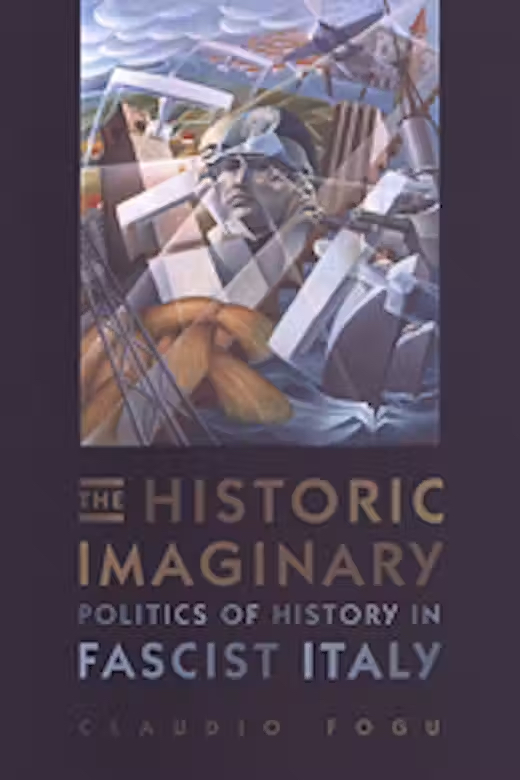
The author claims that his study of fascist historic culture opens the way to an understanding and re-evaluation of the historical relationship between the modernist critique of historical consciousness and the rise of post-modernist forms of temporality.
Focusing on both ritual and mass-visual representations of history in 1920s and 1930s Italy, The Historic Imaginary unveils how Italian Fascism sought to institutionalize a modernist culture of history. The study takes a new historicist and microhistorical approach to cultural-intellectual history, integrating theoretical tools of analysis acquired from visual-cultural studies, art history, linguistics, and reception theory in a sophisticated examination of visual modes of historical representation - from commemorations to monuments to exhibitions and mass-media - spanning the entire period of the Italian-fascist regime.
Claudio Fogu argues that the fascist historic imaginary was intellectually rooted in the actualist philosophy of history elaborated by Giovanni Gentile, culturally grounded in Latin-Catholic rhetorical codes, and aimed at overcoming both Marxist and liberal conceptions of the relationship between historical agency, representation, and consciousness. The book further proposes that this modernist vision of history was a core element of fascist ideology, encapsulated by the famous Mussolinian motto that "fascism makes history rather than writing it," and that its institutionalization constituted a key point of intersection between the fascist aesthetization and sacralization of politics. The author finally claims that his study of fascist historic culture opens the way to an understanding and re-evaluation of the historical relationship between the modernist critique of historical consciousness and the rise of post-modernist forms of temporality.
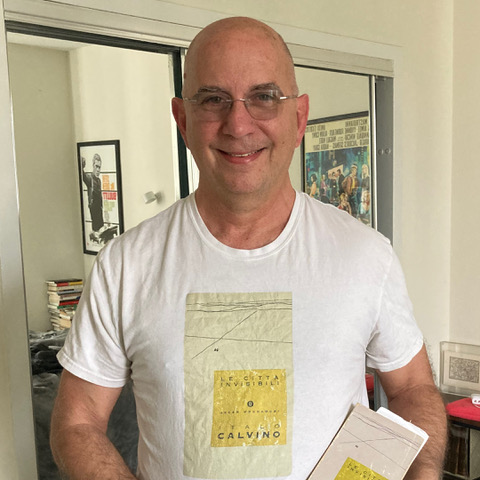
Claudio Fogu
Professor of Italian Studies
Research Interests: Mediterranean imaginaries and cultures; relationship between Italian modernism and mass culture; Fascist forms of imaginary and their relations to representations of fascism; relationships between 20th-century continental philosophy and visual culture.

Stephanie Malia Hom
Professor of Transnational Italian Studies
Research Interests: modern Italy and the Mediterranean; migration and detention; mobility studies; colonialism and imperialism; postcolonial studies; Italian empire and nation-making; tourism studies and theories of travel; tourism and travel literature in and to Italy; folklore and folkloristics; 20th - and 21st-century Italian and Italophone literature.

Its brilliant prose makes [Empire's Mobius Strip] easily accessible to anyone interested in today's migration crisis in the Mediterranean and elsewhere in the world. - American Historical Review
Italy's current crisis of Mediterranean migration and detention has its roots in early twentieth century imperial ambitions. Empire's Mobius Strip investigates how mobile populations were perceived to be major threats to Italian colonization, and how the state's historical mechanisms of control have resurfaced, with greater force, in today's refugee crisis.
What is at stake in Empire's Mobius Strip is a deeper understanding of the forces driving those who move by choice and those who are moved. Stephanie Malia Hom focuses on Libya, considered Italy's most valuable colony, both politically and economically. Often perceived as the least of the great powers, Italian imperialism has been framed as something of "colonialism lite." But Italian colonizers carried out genocide between 1929–33, targeting nomadic Bedouin and marching almost 100,000 of them across the desert, incarcerating them in camps where more than half who entered died, simply because the Italians considered their way of life suspect. There are uncanny echoes with the situation of the Roma and migrants today. Hom explores three sites, in novella-like essays, where Italy's colonial past touches down in the present: the island, the camp, and the village.
Empire's Mobius Strip brings into relief Italy's shifting constellations of mobility and empire, giving them space to surface, submerge, stretch out across time, and fold back on themselves like a Mobius strip. It deftly shows that mobility forges lasting connections between colonial imperialism and neoliberal empire, establishing Italy as a key site for the study of imperial formations in Europe and the Mediterranean.

The Italian nation-state has been defined by practices of mobility. Tourists have flowed in from the era of the Grand Tour to the present, and Italians flowed out in massive numbers in the late 19th and early 20th centuries: Italians made up the largest voluntary emigration in recorded world history. As a bridge from Africa to Europe, Italy has more recently been a destination of choice for immigrants whose tragic stories of shipwreck and confinement are often in the news. This first-of-its-kind edited volume offers a critical accounting of those histories and practices, shedding new light on modern Italy as a flashpoint for mobilities as they relate to nationalism, imperialism, globalization, and consumer, leisure, and labor practices. The book’s eight essays reveal how a country often appreciated for what seems immutable - its classical and Renaissance patrimony - has in fact been shaped by movement and transit.

Every year, Italy swells with millions of tourists who infuse the economy with billions of dollars and almost outnumber Italians themselves. In fact, Italy has been a model tourist destination for longer than it has been a modern state. The Beautiful Country explores the enduring popularity of “destination Italy,” and its role in the development of the global mass tourism industry. Stephanie Malia Hom tracks the evolution of this particular touristic imaginary through texts, practices, and spaces, beginning with the guidebooks that frame Italy as an idealized land of leisure and finishing with destination Italy’s replication around the world. Today, more tourists encounter Italy through places like Las Vegas’s The Venetian Hotel and Casino or Dubai’s Mercato shopping mall than experience the country in Italy itself.
Using an interdisciplinary methodology that includes archival research, ethnographic fieldwork, literary criticism, and spatial analysis, The Beautiful Country reveals destination Italy’s paramount role in the creation of modern mass tourism.
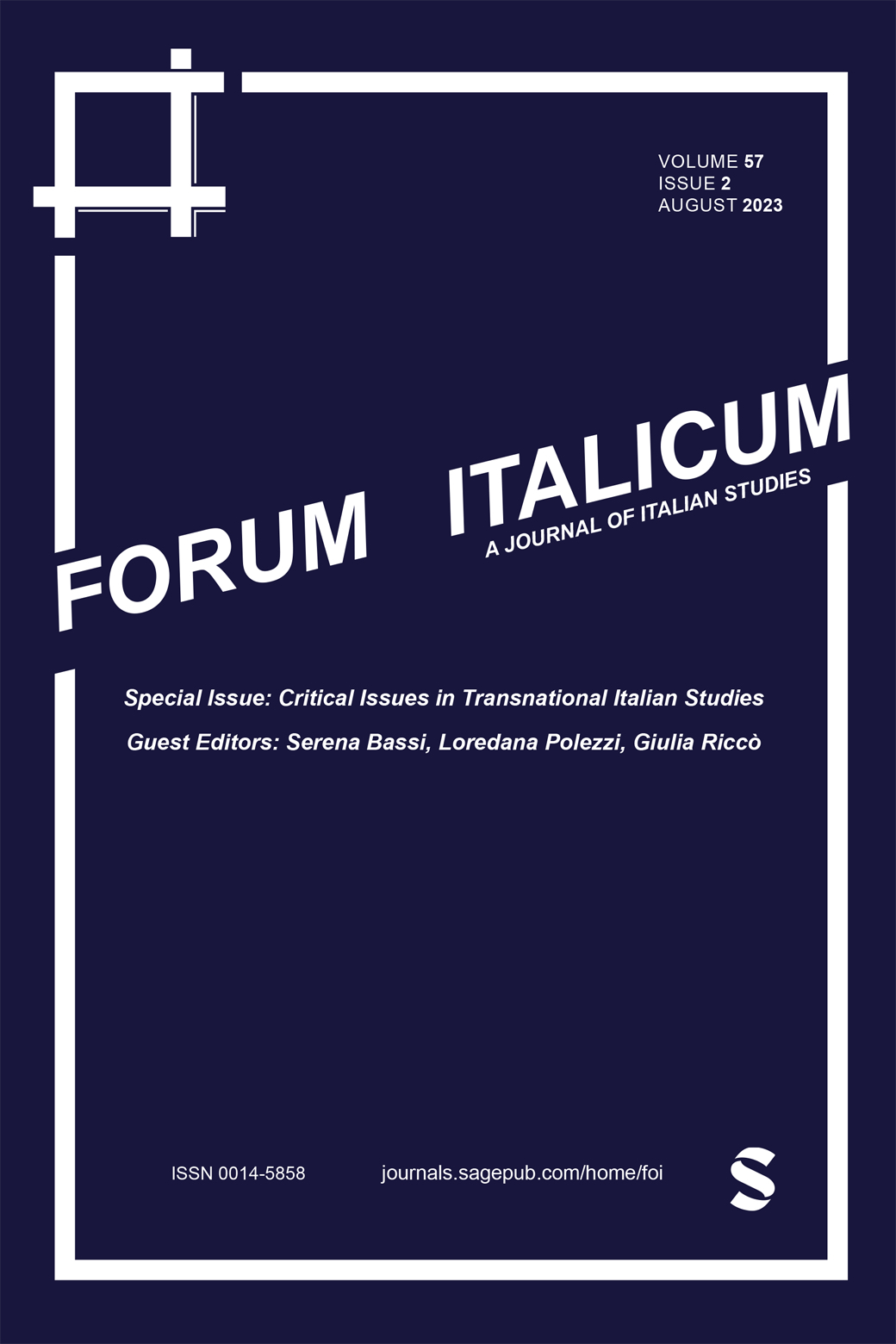
Taking aim at the myth that il razzismo non esiste in Italy, this article explores the rhetorical mechanisms that underpin anti-black racism vis-à-vis Italian colonial fiction—fictions that give life to the deceit that Italy is colorblind. It focuses attention on the work of Orio Vergani (1898-1960) who was one of the most prolific documentarians of Italian East Africa. His reportage established a vast image repository of exoticized, black bodies that reinforced prevailing colonial stereotypes about Africa in the Italian cultural imagination during the early-20th century. Yet his novel, Io, povero negro (1929)—claimed to be Italy's first with a black protagonist—was written before Vergani ever set foot in Africa. The text presents a formulation of blackness conceived of obliquely, in the absence of Italy, and belonging to an elsewhere, that is, between an unnamed colony in Africa, France, and the United States. In so doing, it advances a rhetoric of race defined by absence, blockage, and deflection that was conceived transnationally, which, in turn, helps to set the conditions for both the denial and naturalization of racism in Italy today.

This book follows the renunciation story in Borges and beyond, arguing for its centrality as a Borgesian compositional trope and as a Borgesian prism for reading a global constellation of texts. The renunciation story at the heart of Buddhism, that of a king who leaves his palace to become an ascetic, fascinated Borges because of its cross-cultural adaptability and metamorphic nature, and because it resonated so powerfully across philosophy, politics and aesthetics. From the story and its many variants, Borges’s essays formulated a 'morphological' conception of literature (borrowing the idea from Goethe), whereby a potentially infinite number of stories were generated by transformation of a finite number of 'archetypes'. The king-and-ascetic encounter also tells a powerful political story, setting up a confrontation between power and authority; Borges’s own political predicament is explored against the rich background of truth-telling renouncers. In its poetic variant, the renunciationarchetype morphs into stories about art and artists, with renunciation a key requirement of the creative process: the discussion weaves in and out of Borges to highlight modern writers’ debt to asceticism. Ultimately, the enigmatic appeal of the renunciation story aligns it with the open-endedness of modern parables.

What makes a world author? How did Homer become a «cosmopolitan» author? How does a Mayan creation narrative challenge our Western logocentric ideas of foundational texts? What might world literature look like to a fourth-century Roman reader? How do past and more recent translations of Dante’s Commedia help us to rethink the changing definitions of world literature? How did the Alexander romance adapt to an Islamic context? How did Tasso’s epic adapt to a later cultural context dominated by the «Turkish Fear»? What shaped the West’s first impression of The Tale of Genji? How does the Ovidian myth of Arachne migrate from Japan to the Caribbean? What are the foundational metaphors at the root of Goethe’s weltliteratur paradigm? What happens when cultures import canonical texts for lack of their own? By what process does an eccentric writer reconstruct a new foundational text from heterogeneous fragments of other cultures? How did literary criticism contribute to the canonization of the Thousand and One Nights in Western literature? What is left of the primacy of the national language when writers are published simultaneously in various translations? How do modern misreadings shape our understanding of national epics and ensure their survival?
World literature, first intuited in Goethe’s foundational idea of weltliteratur as literature that seeks to transcend national boundaries, is viewed here in its essential mobility and migratory capacity, which relies on the centrality of the reading act. This volume focuses on foundational texts as they are read across cultures, languages and historical contexts. Its goal is to reflect on canonical texts – from Homer’s Odyssey to Murakami’s Genji, from Cervantes to Mayan hieroglyphs, from Dante to Coetzee, from Goethe to Lezama Lima, from the Thousand and One Nights to Jorge Luis Borges – in a global perspective: how they are translated, appropriated, transformed, how they travel across different cultures and languages, their foundational status evolving accordingly in a post-European world.
Foundational Texts of World Literature includes contributions by Gerardo Aldana, Sandra Bermann, Piero Boitani, Michael Emmerich, Azadeh Yamini Hamedani, Stefan Helgesson, Paulo Lemos Horta, Juan Pablo Lupi, Peter Madsen, Ulrich Marzolph, Suzanne Saïd, Evanghelia Stead, Mads Rosendahl Thomsen, and Richard Van Leeuwen.
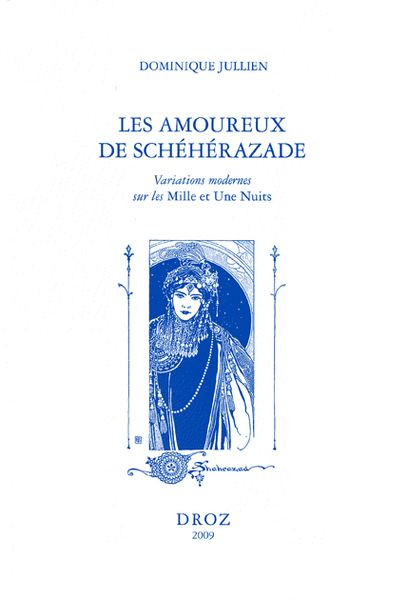
Aucun autre livre, hormis peut-être la Bible ou L’Odyssée, n’a imprégné aussi profondément la littérature que les Mille et une nuits depuis leur apparition en Occident sous la plume de leur premier traducteur, Antoine Galland. De Proust à Salman Rushdie, de Balzac à Naguib Mahfouz, tant d’écrivains amoureux de Schéhérazade partagent cette ambition: réinventer, sans les imiter, les Mille et une nuits. De là l’inépuisable variété de ces réécritures modernes, qui toutes ressemblent au modèle sans pour autant se ressembler entre elles. Pourtant, dans cette profusion, quatre courants dominent, fournissant les quatre volets de la présente étude. La lecture politique des Nuits: le premier chapitre, “Le prince déguisé, symbole politique et motif poétique”, s’attache à un motif qui fera fortune dans le roman populaire du XIXe siècle, celui du héros princier qui, à l’instar du calife Haroun Al-Raschid, se déguise en homme du peuple pour faire le bien. La lecture esthétique: le deuxième chapitre, “Schéhérazade fin-de-siècle”, analyse la réception de la traduction Mardrus dans le milieu littéraire et culturel de la Belle Epoque. La lecture féministe: le troisième chapitre, “Schéhérazade s’émancipe”, montre le rôle-clef de la version Mardrus dans les lectures féministes qui se développent à partir des années vingt, aboutissant à la romancière Assia Djebar et à sa réécriture pessimiste des Nuits dans le contexte de la montée de l’islamisme. La lecture introspective: à travers une analyse du Portrait de l’artiste en jeune singe, variation autobiographique de Michel Butor sur l’ “Histoire du second calender”, le quatrième chapitre, “Schéhérazade au miroir: l’aventure introspective”, se penche sur une tradition interprétative qui voit dans les contes une aventure intérieure, une image du processus créateur. Voici donc, de Restif à Butor, l’histoire de la réécriture française des contes arabes.
---
No other book—except perhaps the Bible or The Odyssey—has so deeply permeated literature as The Thousand and One Nights since their appearance in the West through the pen of their first translator, Antoine Galland. From Proust to Salman Rushdie, from Balzac to Naguib Mahfouz, so many writers enamored with Scheherazade share this ambition: to reinvent The Thousand and One Nights without imitating them. Hence the inexhaustible variety of these modern rewritings, all of which resemble the original while remaining distinct from one another. Yet, amid this profusion, four main currents stand out, forming the four parts of this study. The political reading of the Nights: the first chapter, “The Disguised Prince, Political Symbol and Poetic Motif,” focuses on a motif that found great success in 19th-century popular fiction—that of the princely hero who, like the caliph Harun al-Rashid, disguises himself as a commoner to do good. The aesthetic reading: the second chapter, “Fin-de-siècle Scheherazade,” analyzes the reception of the Mardrus translation within the literary and cultural circles of the Belle Époque. The feminist reading: the third chapter, “Scheherazade Emancipated,” highlights the key role of the Mardrus version in the feminist interpretations that emerged from the 1920s onward, culminating in the work of novelist Assia Djebar and her pessimistic rewriting of the Nights in the context of rising Islamism. The introspective reading: through an analysis of Portrait of the Artist as a Young Ape, Michel Butor’s autobiographical variation on the “Tale of the Second Dervish,” the fourth chapter, “Scheherazade in the Mirror: The Introspective Adventure,” explores an interpretative tradition that sees the tales as an inner journey, a reflection of the creative process. Thus unfolds, from Restif to Butor, the history of the French rewriting of the Arab tales.

Les Contes arabes ou les mémoires de Saint-Simon d’une autre époque”: voilà comment le Narrateur définit le livre qui sera—qui est—la Recherche. Qu’est-ce que réécrire? C’est la question que pose ce livre. Les Mille et Une Nuits et les Mémoires de Saint-Simon constituent moins deux livres modèles qu’un livre double, délimitant pour mieux les réunir le “côté de Scheherazade” et le “côté de Saint-Simon”. Tournant le dos à une classification de thèmes et d’influences, Dominique Jullien définit l’intertextualité comme une filiation et une généalogie, analyse les formes esthétiques qui régissent la réécriture (encastrement, inversion, indexation de la référence) comme autant de catégories herméneutiques révélant la dimension idéologique de l’intertextualité, et inscrit pour finir les livres modèles dans une relation de préfiguration avec le texte de la Recherche. Ce que ce livre s’attache à proposer, c’est en somme une herméneutique des mécanismes de l’intertextualité.
---
The Arabian Tales or the memoirs of Saint-Simon from another era”: that is how the Narrator defines the book that will be—that is—In Search of Lost Time. What is rewriting? That is the question this book poses. The Thousand and One Nights and the Memoirs of Saint-Simon constitute less two model texts than a double book, outlining—so as to better bring them together—the “Scheherazade side” and the “Saint-Simon side.” Turning away from a classification of themes and influences, Dominique Jullien defines intertextuality as a lineage and a genealogy, analyzes the aesthetic forms that govern rewriting (embedding, inversion, indexing of reference) as so many hermeneutic categories revealing the ideological dimension of intertextuality, and finally inscribes the model texts within a relationship of prefiguration with the text of In Search of Lost Time. What this book seeks to offer, in short, is a hermeneutics of the mechanisms of intertextuality.

Dominique Jullien
Professor of French and Comparative Literature
Research Interests: nineteenth- and twentieth-century literature and culture; Proust studies; Borges studies; intertextuality and rewriting; travel narratives; cognitive approaches to literature; and East-West relations.

Renan Larue
Professor of French
Research Interests: eighteenth-century French literature and cultural studies; history of vegetarianism and veganism; history of ideas; alien studies.

Le véganisme prend de plus en plus d'ampleur en Occident. Il s’inscrit dans une riche tradition philosophique et traduit deux dispositions psychologiques partagées par la plupart d’entre nous : la répugnance à faire souffrir les animaux et le désir de préserver la planète (l’élevage constituant aujourd’hui une grave menace sur l’environnement). Dans la mesure où il reste minoritaire et contrarie des habitudes profondément ancrées, le véganisme essuie toutefois une foule de critiques de la part des représentants de l’industrie agroalimentaire comme d’intellectuels. Or, les débats ne sont pas toujours à la hauteur des enjeux ; les désaccords entre partisans et adversaires reposent même souvent sur des malentendus. Cet ouvrage comble les lacunes et nourrit un débat de société devenu incontournable.
---
Veganism is gaining increasing traction in the Western world. It is rooted in a rich philosophical tradition and reflects two psychological tendencies shared by most of us: a reluctance to cause animal suffering and a desire to protect the planet (as livestock farming now poses a serious threat to the environment). As it remains a minority practice and challenges deeply ingrained habits, veganism nonetheless faces a barrage of criticism—from both the agri-food industry and intellectuals alike. Yet the debates often fall short of the real stakes; disagreements between supporters and opponents frequently stem from misunderstandings. This book fills in the gaps and fuels a societal debate that has become impossible to ignore.

Le végétarisme est envisagé et même adopté par un grand nombre de savants et d’écrivains français du xviiie siècle. Les profondes questions que soulève ce régime dépassent largement le cadre des pratiques alimentaires et sont de nature à la fois médicales, anthropologiques, morales et religieuses.
---
Vegetarianism was considered—and even adopted—by many French scholars and writers in the 18th century. The profound questions raised by this diet go far beyond the realm of eating habits; they are medical, anthropological, moral, and religious in nature.

Cet ouvrage rend compte de la querelle qui oppose depuis l'Antiquité partisans et contempteurs du végétarisme. Alors que les débats faisaient rage entre les pythagoriciens, notamment, et les stoïciens à propos du droit qu'ont les hommes d'user des animaux et de leurs chairs, l'Église imposa très tôt aux fidèles de ne rejeter aucune nourriture, hors des périodes dites maigres, sous peine d'excommunication. Il faudra attendre les Lumières pour que « renaissent » le végétarisme et l'idée d'un éventuel droit des bêtes à ne pas être pas tuées et mangées par les hommes. Les principales figures de l'éthique animale qui s'inscrivent dans ce sillage prônent aujourd'hui le « véganisme », c'est-à-dire la fin de toutes les formes que peut prendre l'exploitation des animaux, et tout particulièrement l'élevage. De telles positions suscitent des réactions hostiles de la part des industriels, mais aussi des philosophes se revendiquant de l'humanisme. Selon ces derniers, l'intérêt que suscite le mode de vie végane témoignerait même du déclin des valeurs occidentales.
---
Fierce arguments once opposed Pythagoreans and Stoics over whether humans have the right to use animals and consume their flesh. The Church, for its part, imposed early on that the faithful accept all food—outside designated fasting periods—under penalty of excommunication. It wasn’t until the Enlightenment that vegetarianism "re-emerged," along with the notion that animals might have a right not to be killed and eaten by humans. Today, the leading figures of animal ethics who follow in this tradition advocate for veganism—that is, the end of all forms of animal exploitation, particularly animal farming. Such positions provoke strong opposition, not only from industry representatives but also from philosophers who align themselves with humanism. For these critics, the growing interest in the vegan lifestyle is seen as a symptom of the decline of Western values.

Juin 1947, désert du Nouveau-Mexique. William Bazel, qui exploite un ranch situé au nord-ouest de la ville de Roswell, trouve dans un champ une masse de débris. Soucoupe volante ou simple ballon-sonde ??? Soulevée dès l’Antiquité, la question de l’existence d’une vie extraterrestre nourrit bien des conjectures. Dans les cercles savants, elle fait l’objet de débats passionnés. Dans la culture populaire, des voyageurs de l’espace visitent régulièrement la Terre. Théologie, science, ufologie… Autant d’approches qui vont de l’astrobiologie au complotisme le plus débridé, sans oublier la science-fiction. Depuis 2017 et la diffusion d’étonnantes images d’ovnis par le Pentagone, l’idée d’une possible rencontre avec des civilisations non humaines se répand, en particulier dans les médias américains. Que se passerait-il si le contact était établi ??? Sans bien sûr apporter de réponses définitives, Estiva Reus et Renan Larue montrent plutôt que la figure nécessairement fantasmée de l’extraterrestre en dit long sur nous-mêmes, sur nos craintes et nos espoirs.
---
June 1947, New Mexico desert. William Bazel, who runs a ranch northwest of the town of Roswell, discovers a field littered with debris. Flying saucer or just a weather balloon??? Raised as early as Antiquity, the question of extraterrestrial life has fueled many speculations. In academic circles, it is the subject of heated debates. In popular culture, space travelers regularly visit Earth. Theology, science, ufology… These varied approaches range from astrobiology to the most unbridled conspiracy theories—not to mention science fiction. Since 2017 and the release of astonishing UFO footage by the Pentagon, the idea of a possible encounter with non-human civilizations has been gaining ground, particularly in the American media. What would happen if contact were established??? Without, of course, offering any definitive answers, Estiva Reus and Renan Larue instead show that the necessarily imagined figure of the extraterrestrial speaks volumes about ourselves—about our fears and our hopes.

George Sand inscrit la théâtralité au cœur de son œuvre. Elle explore les limites du théâtre et du roman comme elle interroge les frontières de l'être et du paraître. La théâtralisation de l'existence est chez elle l'obstacle à la rencontre sincère entre les êtres autant que le moyen d'inventer de nouvelles relations humaines. Si les travestissements vestimentaires de Sand ont pu évoquer une performance féministe avant l'heure, l'écrivaine a su créer des personnages chargés d'explorer tous les possibles du corps et de la voix, le plus souvent dans la pudeur et l'idéalisation, mais aussi dans le souci d'une critique sociale et d'un renouvellement des formes littéraires et artistiques. Le concept de performance permet d'interroger les stratégies esthétiques et les facettes dérangeantes des écritures sandiennes, dans leurs rapports au corps, au temps et à l'espace.
---
George Sand places theatricality at the heart of her work. She explores the boundaries of theatre and the novel just as she questions the limits between being and appearing. The theatricalization of existence is, for her, both an obstacle to sincere human connection and a means of inventing new forms of relationships. While Sand's cross-dressing may have suggested a proto-feminist performance, the writer was able to create characters designed to explore all the possibilities of body and voice—most often with modesty and idealization, but also with a concern for social critique and the renewal of literary and artistic forms. The concept of performance allows us to examine the aesthetic strategies and the unsettling aspects of Sand’s writing, in their relation to the body, time, and space.
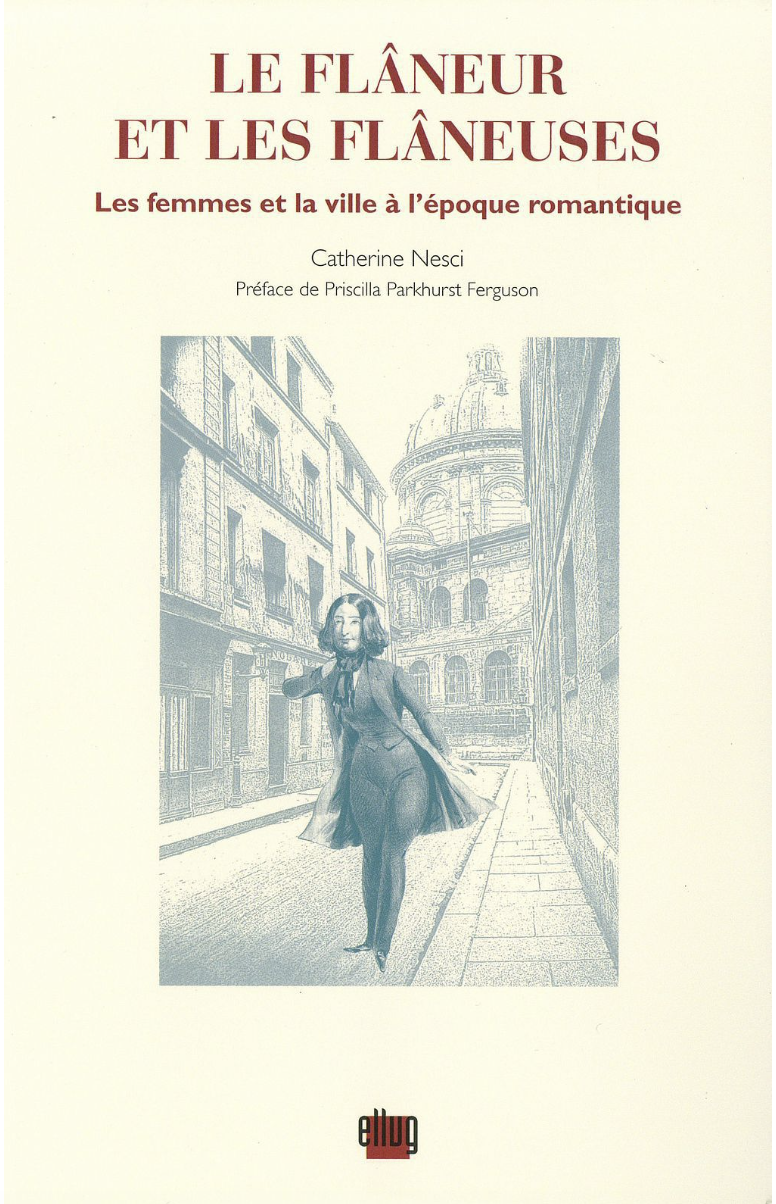
Peut-on concevoir un équivalent féminin du flâneur, cet observateur mobile et esthète de la rue que Walter Benjamin présentait jadis comme un outil conceptuel pour penser la ville moderne ? Si l'hégémonie du flâneur reste indéniable dans les documents et la réalité des pratiques urbaines, le rôle que les femmes jouent dans la culture romantique de la flânerie reste à interroger. Peut-on cerner les contours de la flâneuse, comme on a fait du flâneur un type aux incarnations diverses dans la culture parisienne du XIXe siècle ? Les flâneuses sont-elles des flâneurs incomplets, voire épisodiques ? Autant de questions auxquelles cet essai apporte des réponses nuancées, à partir d'une étude renouvelée de la figure du flâneur dans le Paris romantique. Parcourant d'abord la scène mouvante de la flânerie populaire, puis son incarnation dans le roman balzacien, l'interrogation se porte ensuite vers les pratiques de marche dans la ville, d'écriture de la ville et de construction de soi chez Delphine de Girardin, George Sand et Flora Tristan. Exprimant un imaginaire tout à la fois citadin et féminin, ces écrivaines traduisent une soif de nouveaux cadres d'expérience et de représentation pour les femmes dans la ville.
---
Can we conceive of a feminine equivalent to the flâneur, that mobile and aesthetic observer of the street whom Walter Benjamin once presented as a conceptual tool for thinking about the modern city? While the dominance of the flâneur remains undeniable in both documentation and the reality of urban practices, the role women play in the Romantic culture of flânerie still invites examination. Can we define the contours of the flâneuse, just as the flâneur has been shaped into a type with various incarnations in 19th-century Parisian culture? Are flâneuses merely incomplete or episodic versions of flâneurs? These are some of the questions to which this essay offers nuanced answers, through a renewed study of the flâneur figure in Romantic Paris. Beginning with the shifting scene of popular flânerie, then tracing its embodiment in the Balzacian novel, the inquiry moves on to the practices of walking in the city, writing the city, and constructing the self in the works of Delphine de Girardin, George Sand, and Flora Tristan. Expressing an imaginary that is both urban and feminine, these women writers articulate a thirst for new frameworks of experience and representation for women in the city.

American Mysterymania: du récit des bas-fonds au film noir et au Steampunk (1840-2015)
---
AmericanMysterymania: from the underworld novel to film noir and Steampunk

Catherine Nesci
Professor of Comparative Literature and French Studies
Research Interests: modern and contemporary French & Francophone literature; modernism; urban and space studies; comparative and world literature; literary theory; literature and care; feminist & gender studies; disability studies; health and medical humanities; German Studies (Franz Kafka, Walter Benjamin, Siegfried Kracauer); Holocaust, trauma, & memory studies.

Eric Prieto
Professor of French
Research Interests: twentieth-century literature and theory; Francophone literature and culture; postcolonial theory; music and literature; spatial studies; geocriticism.

Using contemporary literary representations of place, this study focuses on works that have participated in the emergence of new conceptions of place and new place-based identities. The analyses draw on research in cultural geography, cognitive science, urban sociology, and globalization studies.

What can music teach a novelist, autobiographer, or playwright about the art of telling stories? The musical play of forms and sounds seems initially to have little to do with the representational function of the traditional narrative genres. Yet throughout the modernist era, music has been invoked as a model for narrative in its specifically mimetic dimension. Although modernist writers may conceive of musical communication in widely divergent ways, they have tended to agree on one crucial point: that music can help transform narrative into a medium better adapted to the representation of consciousness.
Eric Prieto studies the twentieth-century evolution of this use of music, with particular emphasis on the postwar Parisian avant-garde. For such writers as Samuel Beckett, Michel Leiris, and Robert Pinget, music provides a number of guiding metaphors for the inwardly directed mode of mimesis that Prieto calls "listening in," where the object of representation is not the outside world but the subtly modulating relations between consciousness and world.
This kind of semiotic boundary crossing between music and literature is inherently metaphorical, but, as Prieto's analyses of Beckett, Leiris, and Pinget show, these interart analogies provide valuable clues for bringing to light the unspoken assumptions, obscurely understood principles, and extra-literary aspirations that gave such urgency to the modernist quest to better represent the mind in action.

Since 2010, a significant amount of the American interest in geocriticism has been coming from ecologically minded literary critics, with Scott Slovic, founding president of the Association for the Study of Literature and the Environment (ASLE) and editor of ISLE (Interdisciplinary Studies in Literature and the Environment), writing approvingly of Bertrand Westphal’s approach and encouraging the integration of his work into the ecocritical canon.1 Given their mutual interest in issues like place, space, landscape, and nature, it is not surprising to find this kind of convergence between ecocriticism and geocriticism. Nonetheless, the differences between geo-criticism and eco-criticism, like those between geography and ecology, are significant and worthy of close examination. Although the two approaches are clearly complementary, the questions and goals that shaped them differ in important respects. The purpose of this essay is to examine some of the zones of overlap between the two fields in order to consider some ways in which the two approaches can complement, correct, and inspire each other.
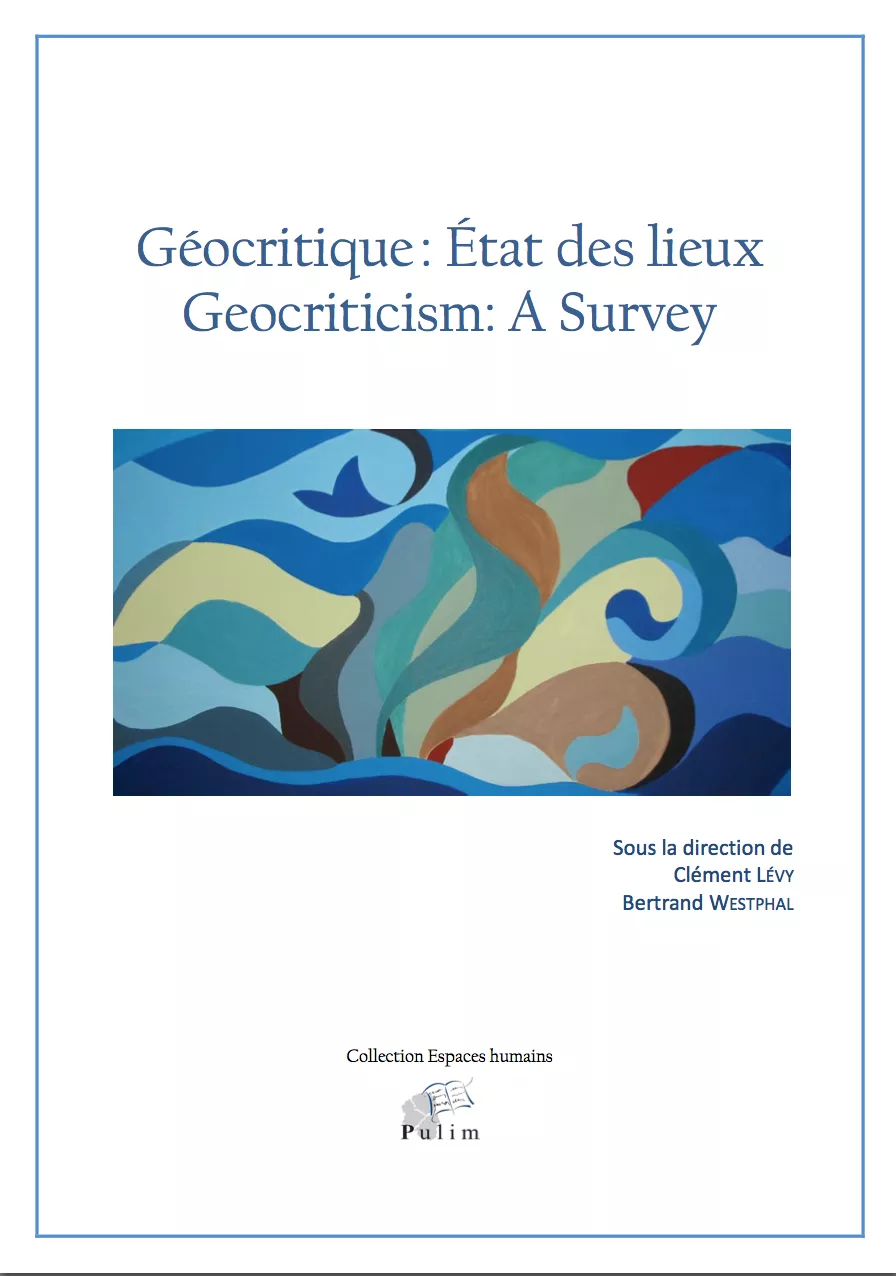
One of the most important demographic trends of the last half century has been the exponential increase in rates of urbanization, especially in the Global South, where it has proceeded at an unprecedented pace much faster, for example, than European cities during the industrial revolution. In the developing world, however, growth in economic output and employment opportunities has lagged behind this rapid increase in urban populations, as has the ability of local governments to address the basic infrastructural and social needs of the new urban arrivals. This has led to the explosive growth of shanty towns and squatter cities throughout the developing world, as people too poor to enter into the formal housing market are forced to seek shelter anywhere they can. As a result, today, one billion people a sixth of humanity live in some type of unplanned, informal, extralegal settlement. This trend has been powerfully documented by the UNHabitat group, which has sought to bring attention to the plight of the world's urban poor

This volume seeks to address questions of urban crisis from an interdisciplinary perspective that foregrounds the particular roles that literature and the creative arts play in both conceptualizing and addressing the multiple challenges facing cities. Noting that the successive crises of recent years (from the 2008 recession to COVID-19) seem to have put an end to the triumphalist tone of much urban writing in the 1990s, this book argues that the current historical moment calls for a different kind of urban discourse, focused on reassessment and regrouping. This edited collection features a variety of different approaches, including close readings of literary works, interviews, essays in cultural and architectural history, and sociological, ethnographic, and urban planning studies. These chapters explore a range of challenges currently faced by cities, and foreground the search for solutions.

Giancarlo Tursi
Assistant Professor of Translation Theory and Translation Studies
Research Interests: translation theory; linguistic philosophy; language politics; minoritized languages (dialects, Creoles, patois); nineteenth-century Italian literature and history; Dante studies; philology.
Emeriti Publications
Our Emeriti faculty are leading scholars in the fields of French and Italian, and continue to be active in advancing their research agendas with publications and creative activities. We invite you to explore their publications and research highlights below.

Cynthia J. Brown
Research Professor Emerita of French
Research Interests: Late medieval/early Renaissance French literature and culture; libraries of late medieval women; the transition from manuscript to print culture; issues of authority and authorship; the relationship between text and image; the book as cultural artifact; text-editing.
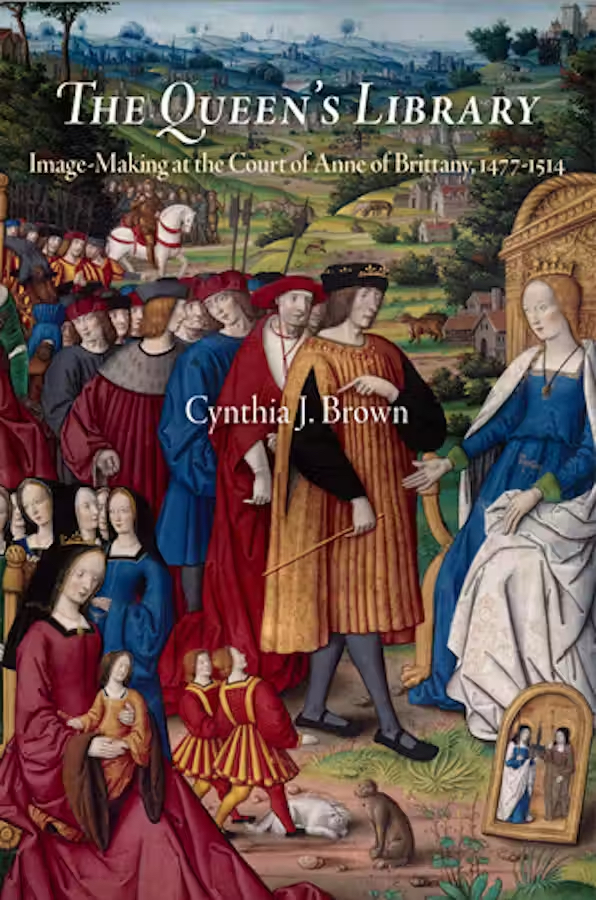
What do the physical characteristics of the books acquired by elite women in the late medieval and early modern
periods tell us about their owners, and what in particular can their illustrations—especially their illustrations of women—reveal? Centered on Anne, duchess of Brittany and twice queen of France, with reference to her contemporaries and successors, The Queen's Library examines the cultural issues surrounding female modes of empowerment and book production. The book aims to uncover the harmonies and conflicts that surfaced in male-authored, male-illustrated works for and about women.
In her interdisciplinary investigation of the cultural and political legacy of Anne of Brittany and her female contemporaries, Cynthia J. Brown argues that the verbal and visual imagery used to represent these women of influence was necessarily complex because of its inherently conflicting portrayal of power and subordination. She contends that it can be understood fully only by drawing on the intersection of pertinent literary, historical, codicological, and art historical sources. In The Queen's Library, Brown examines depictions of women of power in five spheres that tellingly expose this tension: rituals of urban and royal reception; the politics of female personification allegories; the "famous-women" topos; women in mourning; and women mourned.
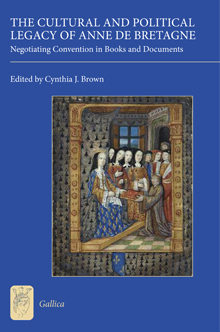
A queen who helped define the cultural landscape of her era.
As duchess of Brittany [1491-1514] and twice queen of France [1491-98; 1498-1514], Anne de Bretagne set a benchmark by which to measure the status of female authority in Europe at the dawn of the Renaissance. Although at times a traditional political pawn, when men who ruled her life were involved in reshaping European alliances, Anne was directly or indirectly involved with the principal political and religious European leaders of her time and helped define the cultural landscape of her era.
Taking a variety of cross-disciplinary perspectives, these ten essays by art historians, literary specialists, historians, and political scientists contribute to the ongoing discussion ofAnne de Bretagne and seek to prompt further investigations into her cultural and political impact. At the same time, they offer insight of a broader nature into related areas of intellectual interest – patronage, the history of the book, the power and definition of queenship and the interpretation of politico-cultural documents and court spectacles – thereby confirming the extensive nature of Anne’s legacy.
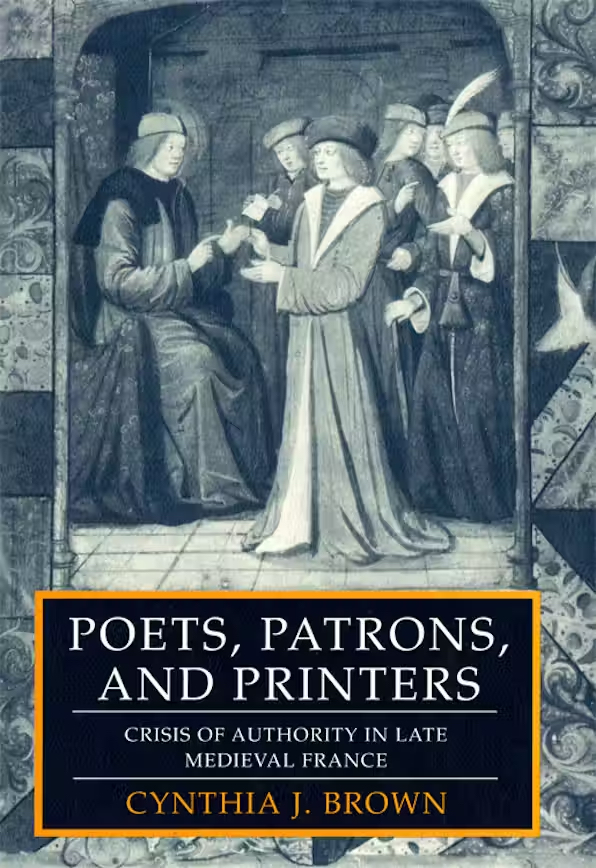
Cynthia J. Brown explains why the advent of print in the late medieval period brought about changes in relationships among poets, patrons, and printers which led to a new conception of authorship.
Examining such paratextual elements of manuscripts as title pages, colophons, and illustrations as well as such literary strategies as experimentation with narrative voice, Brown traces authors' attempts to underscore their narrative presence in their works and to displace patrons from their role as sponsors and protectors of the book. Her accounts of the struggles of poets, including Jean Lemaire, Jean Bouchet, Jean Molinet, and Pierre Gringore, over the design, printing, and sale of their books demonstrate how authors secured the status of literary proprietor during the transition from the culture of script and courtly patronage to that of print capitalism.
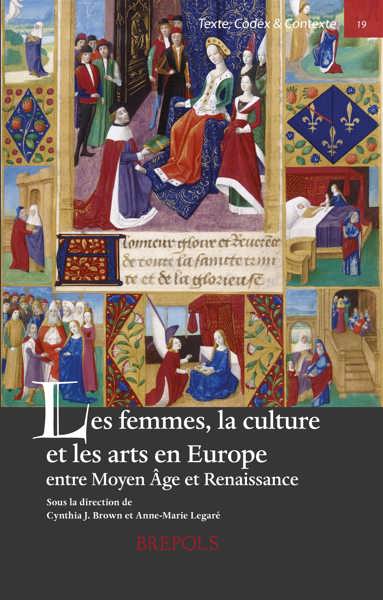
The articles in this collection explore female patronage in literary, artistic and bibliophilic spheres from the Middle Ages to the early Renaissance with the aim of better defining women’s roles in the textual and visual (re)production and transmission of secular and religious works. What was their influence as commissioners of these oeuvres? Were literary texts translated or revised with a female-oriented message in mind? To what extent were images in illuminated manuscripts, illustrated books and paintings adapted to women’s interests? Bringing to light the phenomenon of cultural feminization, its conditions and constraints, the multidisciplinary approaches presented here elucidate in innovative and original fashion the real character of female patronage in Europe between the 13th and 16th centuries.
Les articles de ce recueil traitent du mécénat bibliophilique, littéraire et artistique des femmes du Moyen Âge et de la Première Renaissance afin de préciser leur rôle dans la production écrite et iconographique, en contexte profane ou religieux. Quelle fut leur influence comme commanditaires ? Des œuvres littéraires furent-elles traduites ou remaniées pour transmettre un message plus spécifiquement féminin ? De même, jusqu’à quel point les images des manuscrits enluminés, des livres illustrés et des tableaux peints furent-elles transformées ? Les approches pluridisciplinaires présentées ici révèlent un phénomène de féminisation culturelle avec ses exigences et ses limites. Ainsi s’éclaire de façon novatrice et originale le caractère réel du mécénat féminin en Europe entre les XIIIe et XVIe siècles.

Jody Enders
Distinguished Professor Emerita of French and Theater
Research Interests: medieval theater and performance; medieval French literature; translating theater; translation studies; theater history; history of comedy; history of rhetoric; performance theory; interrelations of law and literature.
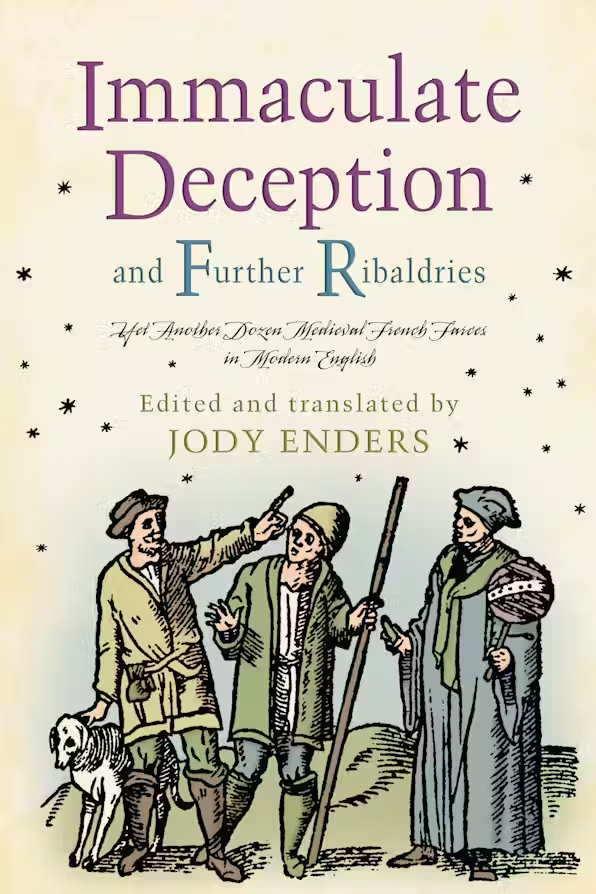
Did you hear the one about the Mother Superior who was so busy casting the first stone that she got caught in flagrante delicto with her lover? What about the drunk with a Savior complex who was fool enough to believe himself to be the Second Coming? And that's nothing compared to what happens when comedy gets its grubby paws on the confessional. Enter fifteenth- and sixteenth-century French farce, the "bestseller" of a world that stands to tell us a lot about the enduring influence of a Shakespeare or a Molière. It's the sacrilegious world of Immaculate Deception, the third volume in a series of stage-friendly translations from the Middle French. These twelve engagingly funny satires target religious hypocrisy in that in-your-face way that only true slapstick can muster. There is literally nothing sacred.
Why this repertoire and why now? The current political climate has had dire consequences for the pleasures of satire at a cultural moment when we have never needed it more. It turns out that the proverbial Dark Ages had a lighter side; and France's over 200 rollicking, frolicking, singing, and dancing comedies—more extant than in any other vernacular—have waited long enough for their moment in the spotlight. They are seriously funny: funny enough to reclaim their place in cultural history, and serious enough to participate in the larger conversation about what it means to be a social influencer, then and now. Rather than relegate medieval texts to the dustbin of history, an unabashedly feminist translation can reframe and reject the sexism of bygone days by doing what theater always invites us to do: interpret, inflect, and adapt.
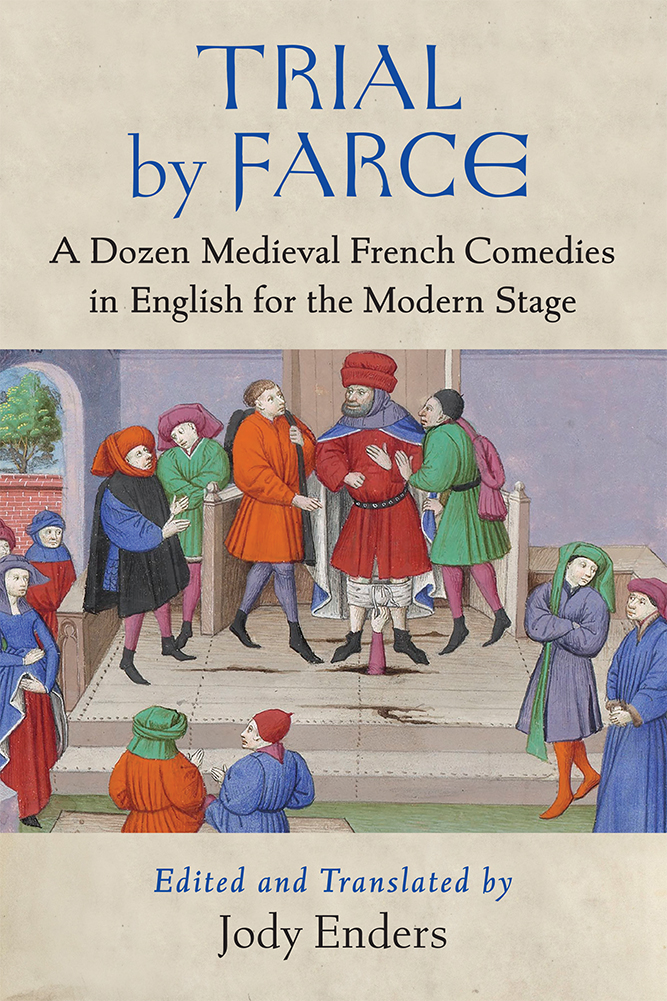
Was there more to comedy than Chaucer, the Second Shepherds’ Play, or Shakespeare? Of course! But, for a real taste of medieval and Renaissance humor and in-your-face slapstick, one must cross the Channel to France, where over two hundred extant farces regularly dazzled crowds with blistering satires. Dwarfing all other contemporaneous theatrical repertoires, the boisterous French corpus is populated by lawyers, lawyers everywhere. No surprise there. The lion’s share of mostly anonymous farces was written by barristers, law students, and legal apprentices. Famous for skewering unjust judges and irreligious ecclesiastics, they belonged to a 10,000-member legal society known as the Basoche, which flourished between 1450 and 1550. What is more, their dramatic send-ups of real and fictional court cases were still going strong on the eve of Molière, resilient against those who sought to censor and repress them. The suspenseful wait to see justice done has always made for high drama or, in this case, low drama. But, for centuries, the scripts for these outrageous shows were available only in French editions gathered from scattered print and manuscript sources.
In Trial by Farce, prize-winning theater historian Jody Enders brings twelve of the funniest legal farces to English-speaking audiences in a refreshingly uncensored but philologically faithful vernacular. Newly conceived as much for scholars as for students and theater practitioners, this repertoire and its familiar stock characters come vividly to life as they struggle to negotiate the limits of power, politics, class, gender, and, above all, justice. Through the distinctive blend of wit, social critique, and breathless boisterousness that is farce, we gain a new understanding of comedy itself as form of political correction. In ways presciently modern and even postmodern, farce paints a different cultural picture of the notoriously authoritarian Middle Ages with its own vision of liberty and justice for all. Theater eternally offers ways for new generations to raise their voices and act.
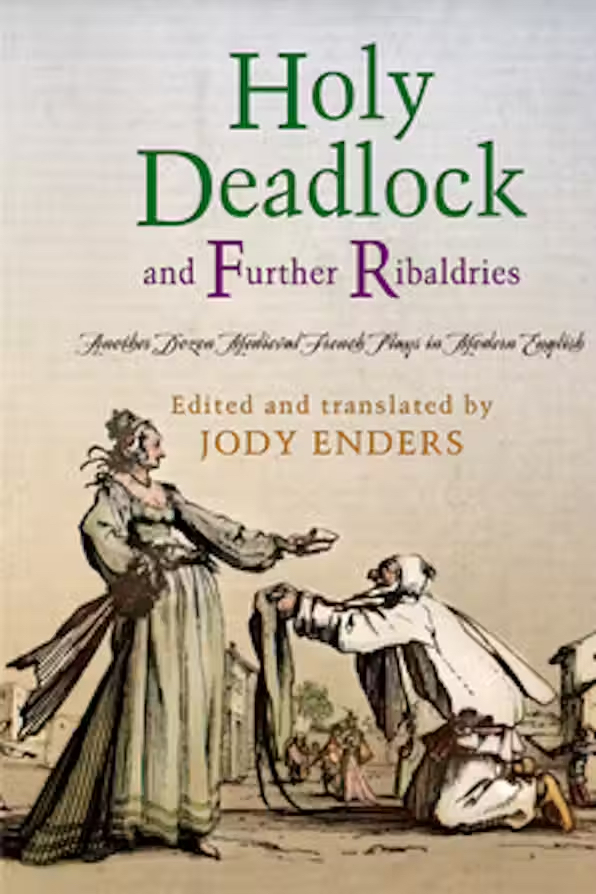
Did you hear the one about the newlywed who rushes off for legal advice before the honeymoon is over? Or the husbands who arrange for an enormous tub in which to cure their sugary wives with a pinch of salt? How about a participatory processional toward marriage so sacrilegious that it puts Chaucer's pilgrimage to shame? And who could have imagined a medieval series of plays devoted to spouse-swapping? Jody Enders has heard and seen all this and more, and shares it in her second volume of performance-friendly translations of medieval French farces. Carefully culled from more than two hundred extant farces, and crafted with a wit and contemporary sensibility that make them playable half a millennium later, these dozen bawdy plays take on the hilariously depressing and depressingly hilarious state of holy wedlock.
In fifteenth- and sixteenth-century comedy, love and marriage do not exactly go together like a horse and carriage. What with all the arranged matches of child brides to doddering geezers, the frustration, fear, anxiety, jealousy, disappointment, and despair are matched only by the eagerness with which everybody sings, dances, and cavorts in the pursuit of deception, trickery, and adultery. Easily recognizable stock characters come vividly to life, struggling to negotiate the limits of power, class, and gender, each embodying the distinctive blend of wit, social critique, and breathless boisterousness that is farce. Whether the antics play out on the fifteenth-century stage or the twenty-first-century screen, Enders notes, comedy revels in shining its brightest spotlight on the social and legal questions of what makes a family. Her volume defines and redefines love and marriage with a message that no passage of time can tear asunder: social change finds its start where comedy itself begins—at home.

Was there more to medieval and Renaissance comedy than Chaucer and Shakespeare? Bien sûr. For a real taste of saucy early European humor, one must cross the Channel to France. There, in the fifteenth and early sixteenth centuries, the sophisticated met the scatological in popular performances presented by roving troupes in public squares that skewered sex, politics, and religion. For centuries, the scripts for these outrageous, anonymously written shows were available only in French editions gathered from scattered print and manuscript sources. Now prize-winning theater historian Jody Enders brings twelve of the funniest of these farces to contemporary English-speaking audiences in "The Farce of the Fart" and Other Ribaldries. Enders's translation captures the full richness of the colorful characters, irreverent humor, and over-the-top plotlines, all in a refreshingly uncensored American vernacular.
Those who have never heard the one about the Cobbler, the Monk, the Wife, and the Gatekeeper should prepare to be shocked and entertained. "The Farce of the Fart" and Other Ribaldries is populated by hilarious characters high and low. For medievalists, theater practitioners, and classic comedy lovers alike, Enders provides a wealth of information about the plays and their history. Helpful details abound for each play about plot, character development, sets, staging, costumes, and props. This performance-friendly collection offers in-depth guidance to actors, directors, dramaturges, teachers, and their students.
"The Farce of the Fart" and Other Ribaldries puts fifteenth-century French farce in its rightful place alongside Chaucer, Shakespeare, commedia dell'arte, and Molière—not to mention Monty Python. Vive la Farce!

In Aging Gracefully in the Renaissance: Stories of Later Life from Petrarch to Montaigne Cynthia Skenazi explores a shift in attitudes towards aging and provides a historical perspective on a crucial problem of our time.
From the late fourteenth to the end of the sixteenth centuries, the elderly subject became a point of new social, medical, political, and literary attention on both sides of the Alps. A movement of secularization tended to dissociate old age from the Christian preparation for death, re-orienting the concept of aging around pragmatic matters such as health care, intergenerational relationships, and accrued insights one might wish to pass along. Such changes were accompanied by an increasing number of personal accounts of later life.
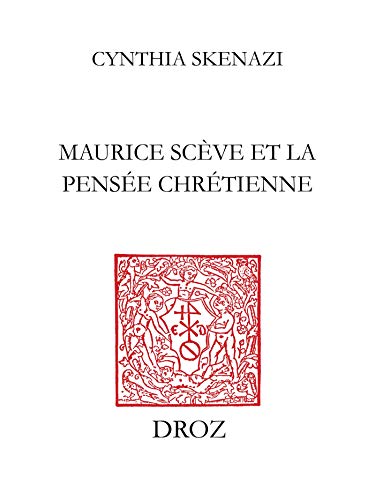
Mme Skenazi a replacé la production scévienne, la Délie avant tout, mais également le Microcosme, dans les milieux évangéliques qui l'ont nourrie. L'influence de Marguerite de Navarre, avec le thème de la conversion, mais aussi celle d'Erasme, reprenant la conception paulinienne de la volonté dans l'Enchiridion militis christiani, sont ainsi mis en valeur.
---
Mme Skenazi has situated Scève’s work—Délie above all, but also Microcosme—within the evangelical circles that nourished it.
The influence of Marguerite de Navarre, particularly through the theme of conversion, as well as that of Erasmus, drawing on the Pauline conception of the will in the Enchiridion militis christiani, are thus brought to light.
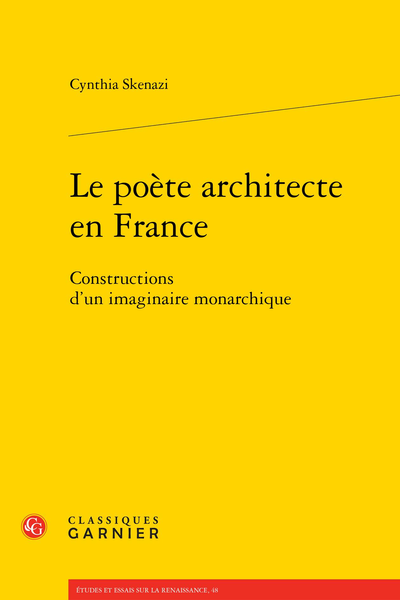
Des arts visuels à la poésie, de la politique à l'esthétique, ce volume étudie la construction d’un imaginaire monarchique dans l’œuvre des poètes et les édifices royaux. Si elle sert la propagande nationaliste et use de stratégies de persuasion, l’alliance des arts nourrit aussi l'imagination créatrice de formes.
---
From visual arts to poetry, from politics to aesthetics, this volume examines the construction of a monarchical imaginary in the works of poets and royal architecture. While it serves nationalist propaganda and employs strategies of persuasion, the alliance of the arts also nourishes the creative imagination of forms.

Née il y a près de cent ans (le 30 décembre 1883), morte il y a près de neuf ans (le 9 mars 1975), Marie Gevers n'a pas cessé, depuis l'apparition de La Comtesse des digues à Paris en 1931, d'être une «présence» dans nos lettres. Présence littéraire, bien sûr, mais aussi présence fraternelle, présence fidèle à travers tous les soubresauts du siècle. Elle a vécu, éprouvé les événements, mais elle est restée merveilleusement égale, comme si elle détenait le secret d'un mystérieux accord que tout peut émouvoir et que rien ne peut ébranler. Sans doute est-ce avant tout son sens de la nature qui l'a rendue si stable et si sereine. Non point l'émotion facile devant les fleurs ou les oiseaux : au contraire, un sentiment profond de tout ce qui vit et de la place de l'humain dans le courant de la vie. Cynthia Skenazi a consacré à Marie Gevers sa thèse de doctorat à l'Université Libre de Bruxelles. Elle y a trouvé la matière de ce livre éclairant et amical.
---
Born nearly a hundred years ago (on December 30, 1883) and passing away almost nine years ago (on March 9, 1975), Marie Gevers has remained a constant “presence” in our literature since the publication of La Comtesse des digues in Paris in 1931.
A literary presence, of course, but also a fraternal one—steadfast and faithful throughout all the upheavals of the century. She lived through and experienced the events of her time, yet remained wonderfully constant, as if she possessed the secret of a mysterious harmony—one that could be touched by everything, but shaken by nothing. No doubt it was, above all, her sensitivity to nature that made her so steady and serene. Not a superficial emotion stirred by flowers or birds, but rather a deep feeling for all living things and for the place of human beings within the stream of life. Cynthia Skenazi devoted her doctoral thesis at the Université Libre de Bruxelles to Marie Gevers. From it, she drew the substance of this enlightening and affectionate book.

Cynthia Skenazi
Professor of French
Research Interests: Renaissance literature and culture; Belgian literature in French; rhetoric; aging studies.

Originally published in 1622, Love in the Mirror tells the unforgettable and path-breaking story of a passionate love affair between two women in early modern Florence. Despite the risk of social sanctions, Florinda and Lidia freely consent to love each other “breast to breast and mouth to mouth,” with some surprising consequences for the institution of marriage.
This bilingual edition of the play introduces the English-speaking reader to one of the most remarkable creative artists of the Baroque age, Giovan Battista Andreini (1576–1654). Actor, playwright, and son of the first great diva of the European stage, Isabella Andreini, Giovan Battista was renowned in his lifetime as an avant-garde theatrical innovator. While drawing on the Italian commedia dell’arte, his comedies go far beyond its limits in order— like Calderón, Corneille and Shakespeare—to subvert traditional views of the relationship between art and life, representation and reality.
Love in the Mirror, which was lost from view for centuries, is here translated for the first time into a highly accessible and fully annotated English version. The volume includes a wideranging introduction to this experimental comic masterpiece, as well as to the life and works of G.B. Andreini.
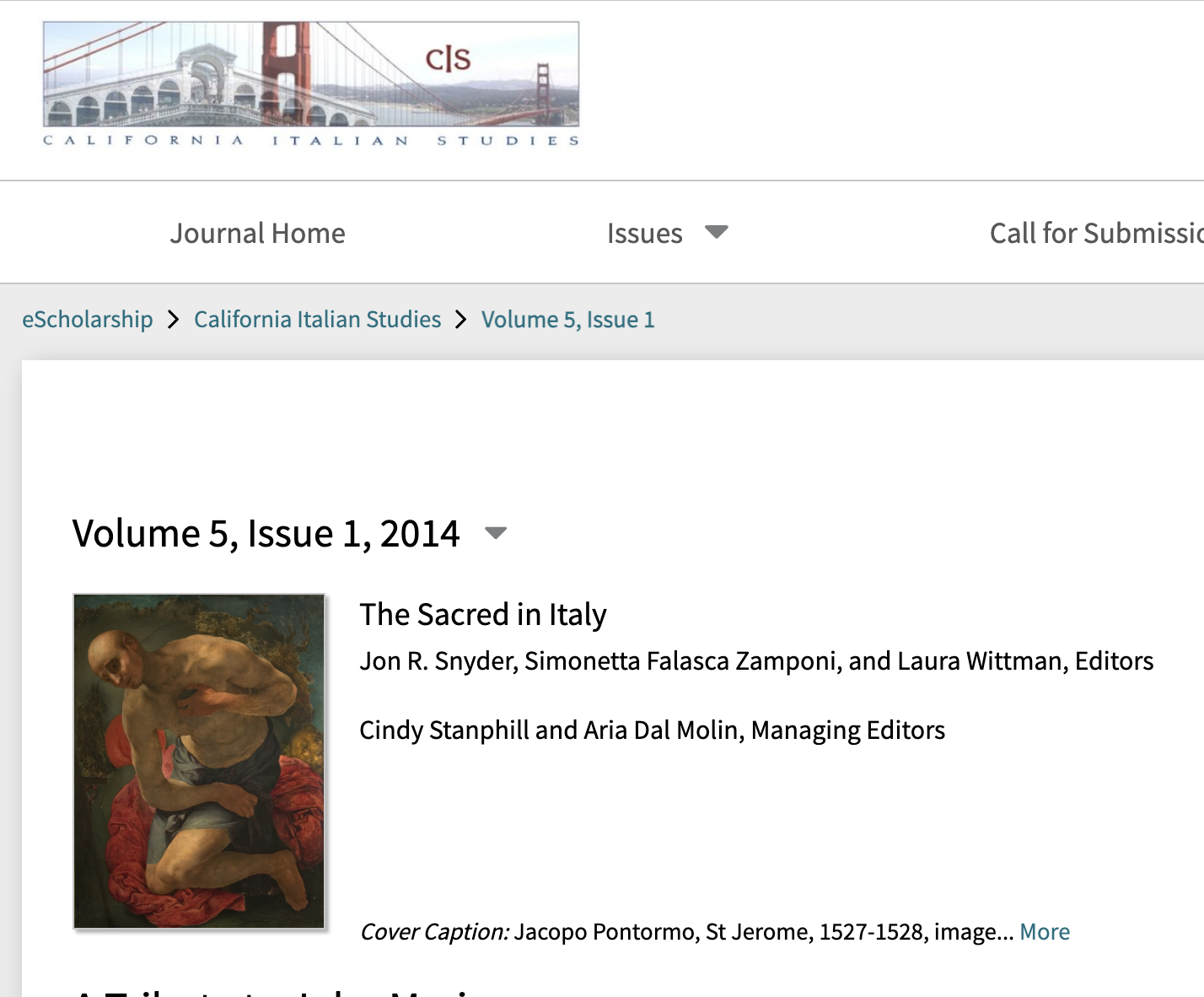
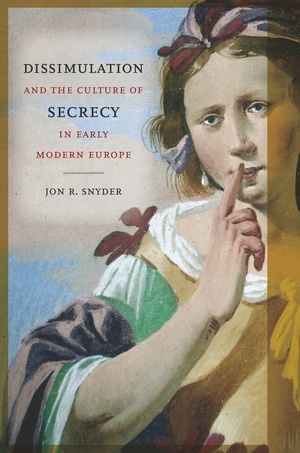
“Larvatus prodeo,” announced René Descartes at the beginning of the seventeenth century: “I come forward, masked.” Deliberately disguising or silencing their most intimate thoughts and emotions, many early modern Europeans besides Descartes-princes, courtiers, aristocrats and commoners alike-chose to practice the shadowy art of dissimulation. For men and women who could not risk revealing their inner lives to those around them, this art of incommunicativity was crucial, both personally and politically. Many writers and intellectuals sought to explain, expose, justify, or condemn the emergence of this new culture of secrecy, and from Naples to the Netherlands controversy swirled for two centuries around the powers and limits of dissimulation, whether in affairs of state or affairs of the heart. This beautifully written work crisscrosses Europe, with a special focus on Italy, to explore attitudes toward the art of dissimulation in the sixteenth and seventeenth centuries. Discussing many canonical and lesser-known works, Jon R. Snyder examines the treatment of dissimulation in early modern treatises and writings on the court, civility, moral philosophy, political theory, and in the visual arts.

Il Barocco segna l'emergere del primo movimento artistico globale. In un'epoca di straordinarie scoperte scientifiche e geografiche, nonché di mutamenti sociali e politici senza precedenti che travolgono la coscienza europea, si elabora e si diffonde - dall'Occidente all'Oriente - un nuovo modo di rappresentare, raffigurare, narrare il mondo sensibile e spirituale. L'estetica barocca costituisce un primo tentivo di 'pensare', e da vicino, questo ampio fenomeno culturale, senza peraltro l'apporto di una filosofia dell'arte (la quale nascerà soltanto nel Settecento). Questo libro ripercorre i principali momenti e temi del pensiero estetico barocco che stanno alla base dell'esperienza artistica nella prima fase della modernità.
---
The Baroque marks the emergence of the first global artistic movement. In an era of extraordinary scientific and geographical discoveries, as well as unprecedented social and political upheavals that shake European consciousness, a new way of representing, depicting, and narrating the physical and spiritual world is developed and spread—from West to East. Baroque aesthetics represents an initial attempt to think through—and up close—this vast cultural phenomenon, though still without the support of a philosophy of art (which would only emerge in the eighteenth century). This book retraces the key moments and themes of Baroque aesthetic thought that underlie the artistic experience in the early phase of modernity.

Jon R. Snyder
Research Professor Emeritus of Italian Studies and Comparative Literature
Research Interests: Italian theater; Italian studies; aesthetics; Baroque literature and culture; translation studies.

Ronald W. Tobin
Research Professor Emeritus of French
Research Interests: 17th-century theater; comedy and tragedy: Molière and Racine; mythology and tragedy; literature and food Studies; classical civilities.
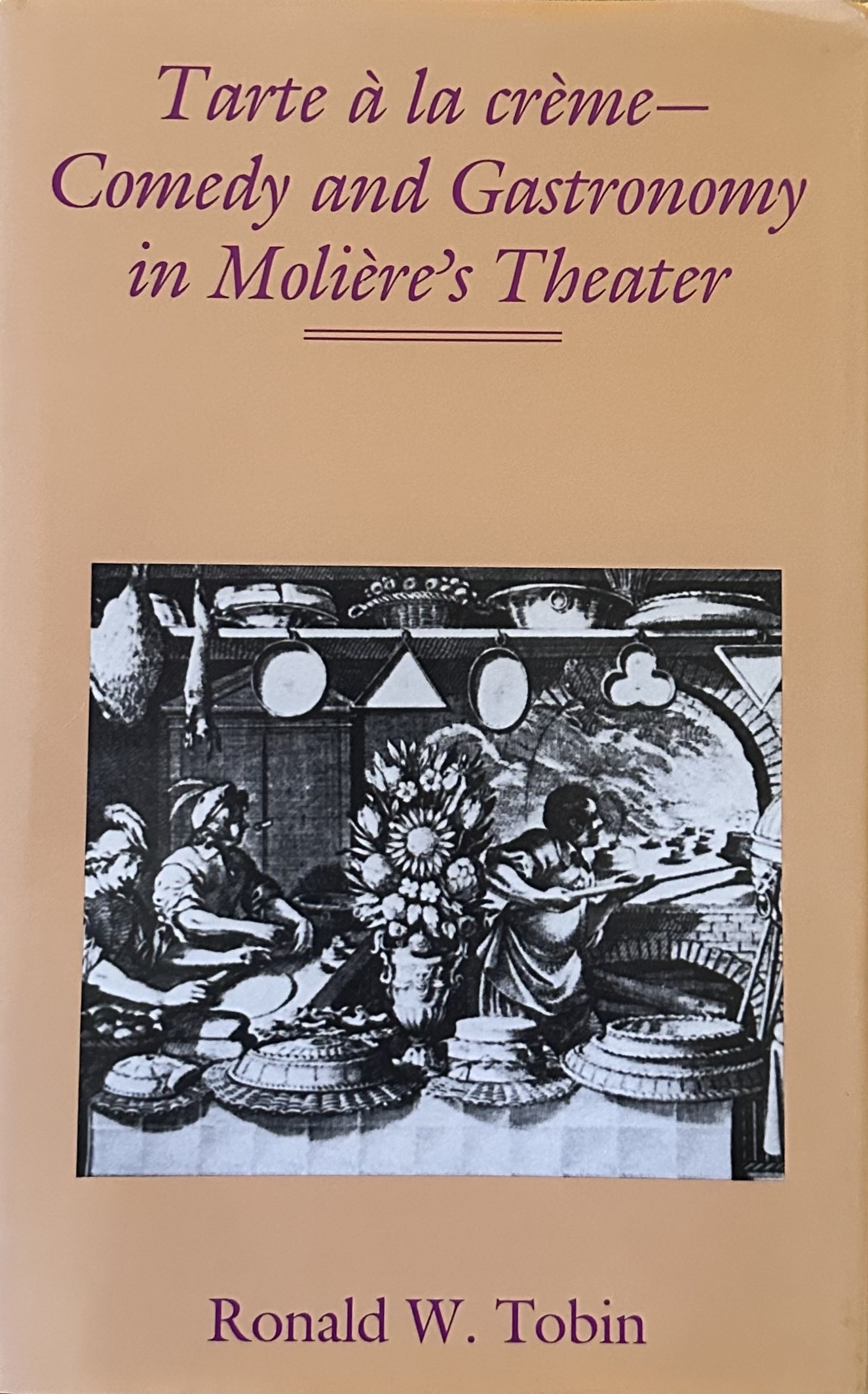

L'aventure racinienne trace une évolution de la critique racinienne. Le parcours de l'ouvrage est double : il suit, d'une part, le sort de Racine à travers les cinquante dernières années ; d'autre part, il relate son accompagnement par l'auteur, également éditeur de quatre volumes sur Racine. Déblayant des chemins critiques controversés et confrontant toutes les tendances, Ronald Tobin met au jour l'inspiration culturelle, largement française et anglo-saxonne, qui a produit une explosion d'échanges autour des tragédies.
---
The Racinian adventure traces the evolution of Racinian criticism. The structure of the work is twofold: on the one hand, it follows the fate of Racine over the past fifty years; on the other, it recounts the author’s personal engagement with Racine, as an editor of four volumes dedicated to his work. Clearing a path through controversial critical approaches and confronting all major trends, Ronald Tobin brings to light the cultural inspiration—largely French and Anglo-Saxon—that has sparked an explosion of dialogue around the tragedies.
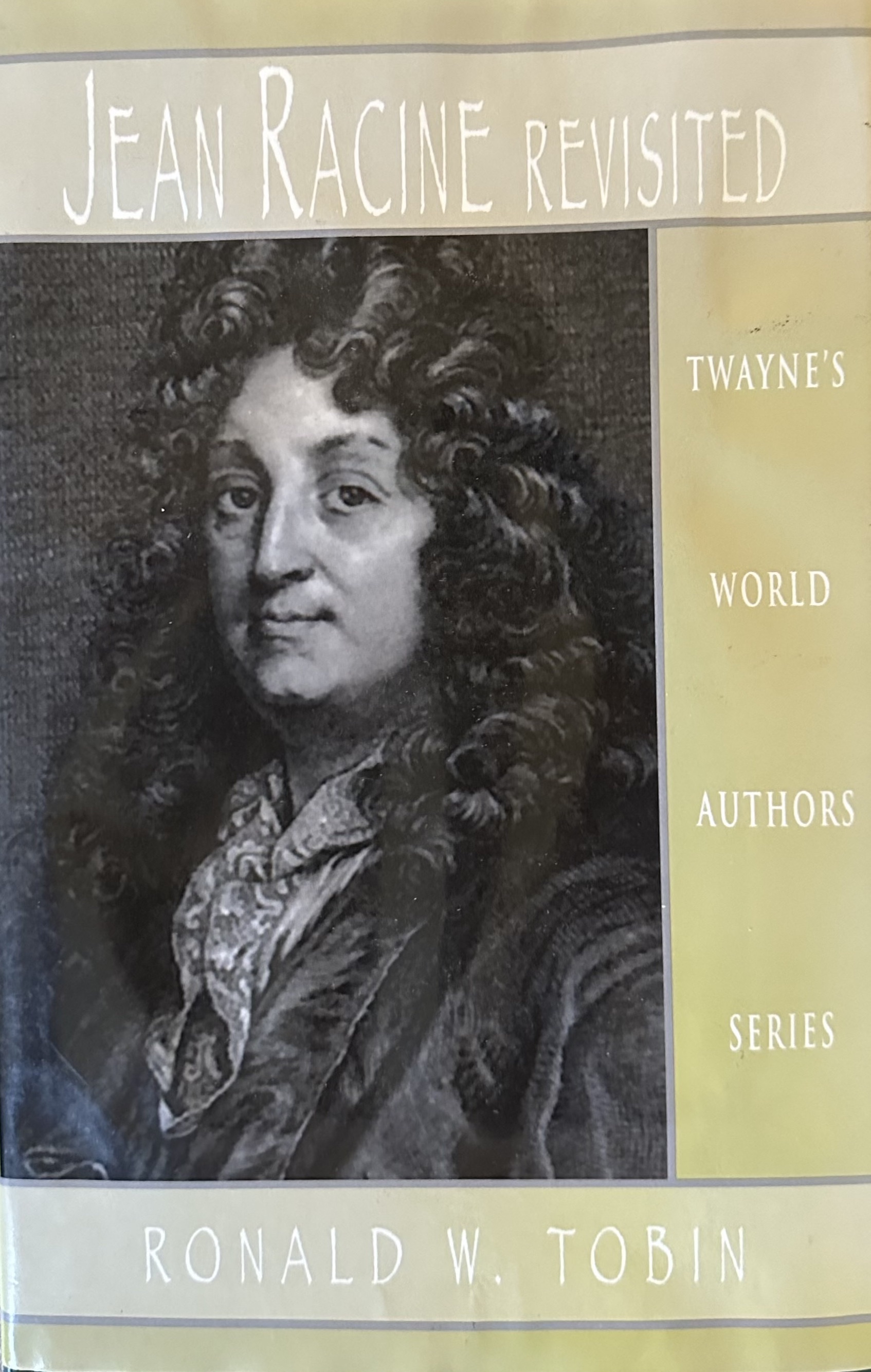
Twaynes United States Authors, English Authors, and World Authors Series present concise critical introductions to great writers and their works. Devoted to critical interpretation and discussion of an authors work, each study takesaccount of major literary trends and important scholarly contributions and provides new critical insights with an original point of view. An Authors Series volume addresses readers ranging from advanced high school students to university professors. The book suggests to the informed reader new ways of considering a writers work. A reader new to the work under examination will, after reading theAuthors Series, be compelled to turn to the originals, bringing to the reading a basic knowledge and fresh critical perspectives. Each volume features:
-
A critical, interpretive study and explication of the authors works
-
A brief biography of the author
-
An accessible chronology outlining the life, work, and relevant historical background of the author
-
Aids for further study -- complete notes and references, a selected annotated bibliography and an index
-
A readable style presented in a manageable length



